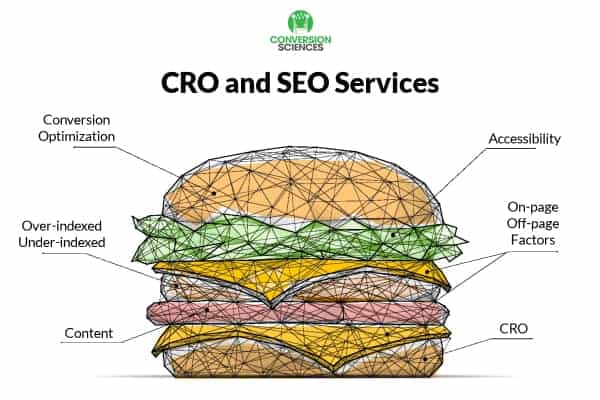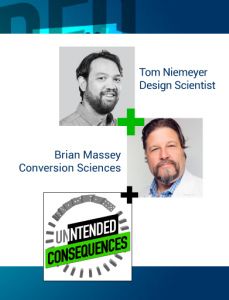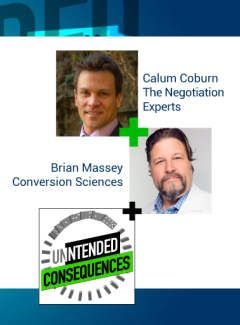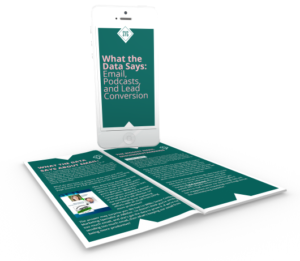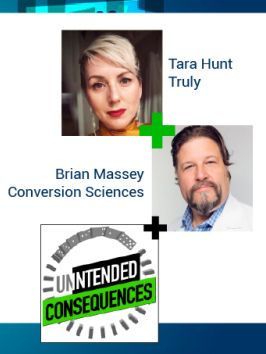Conversion rate optimization (CRO) is important at every stage of your business. But if you have a low-volume site, you may not be able to do the A/B testing that is the hallmark of so many CRO projects. Here are conversion optimization techniques that work no matter where you are on the CRO spectrum.
TLDR Summary
- Different types of CRO: Pre-post testing vs. A/B testing (00:00 – 5:03)
- Challenges with low traffic sites and optimizing for them (5:03 – 11:55)
- Importance of understanding your data and setting expectations (11:55 – 18:31)
- Role of heuristic analysis and its limitations (18:31 – 24:06)
- Value of session recordings and heatmaps (24:06 – 28:37)
- Knowing what and where to test (28:37 – 32:05)
- Importance of having a conversion strategist and the right team (32:05 – 37:07)
- Emphasis on systematic experimentation and continuous improvement (37:07 – 45:04)
Download the Transcript
***
Conversion rate optimization is the process of improving your website to increase the percentage of visitors who take a desired action. Whether it’s making a purchase, filling out a form, or signing up for a newsletter, effective CRO can dramatically enhance your online performance. Here are your best options for optimizing your website.
The Spectrum of Optimization
Brian and Joel explain that conversion rate optimization can be viewed on a spectrum, ranging from low-volume sites to advanced data-driven strategies. Each stage requires different approaches and considerations. In this podcast, they explore the different conversion optimization techniques that work for each stage of the spectrum.
Optimizing a Low-Volume Site
On one end of the spectrum is the lower volume website. To optimize these sites, you have to turn up your risk tolerance dial. Since you don’t have a big enough sample size to run accurate tests, you run into the optimization paradox: you have less data to understand how to bring about meaningful change, but you have to drive meaningful change in order to find detectable change.
The conversion rate is essentially a ratio. The smaller your sample size, the more subject the ratio is to fluctuation.
The truth is, it’s very difficult to make changes that win on any website. Even for the best in the business, the batting average is three out of ten. Four out of ten are winners to the dollar. Nobody knows exactly what’s going to work. That’s the puzzle of it. You have to fail systematically to uncover what’s going to work. For smaller websites, that’s even more challenging.
Conversion Optimization Techniques for Low-Volume Sites
Before and After Testing (BA Testing): Change something on the website and wait to see whether it improves results. It’s important to know which tools are needed for the occasion and how many tools you can be using at the same time. And, of course, if you aren’t measuring results, it’s not really optimization.
Home Run Testing: Also known as big swings, where you run an A/B test but apply your results to before and after testing. With this approach, you’re looking for signature wins of 50% to 70% lift. With a relatively small sample size, the math works out because the lift is so big. But you have to be willing to make an optimization error, calling a test a loser because it only had 20 or 30% lift — even if it could have improved things if you had been able to run the test long enough to get the right sample size.
Data-Informed Gut Decisions: On a lower volume website, you have to know your customers. You can have 40 to 30 conversions with the conversion rate showing a delta, but it’s still low volume. You don’t have statistical significance, but if there is no evidence that this is going to hurt you and there is evidence that the change will help you, then do it. Do it and move on.
Choosing an Agency for Low-Volume Sites
If you’re a smaller volume website, there’s bad news. Our full-team approach probably isn’t the best fit for you. The ROI won’t be there, and we don’t do deals unless we feel we can provide measurable value.
Optimization is about peeling back layer after layer of the onion — different types of onions and different types of data. You have to discover your customers’ preferences. Then you make meaningful changes for them.
Heuristic Analysis
Moving along the spectrum, Brian and Joel discuss heuristic analysis, which involves evaluating a site based on established best practices and design principles.
Heuristic analysis is useful for identifying low-hanging fruit and common issues in website design.
Fix the things that are broken: There’s only one rock-solid best practice. Make sure your site is not broken in a way that prevents people from taking the action you want them to take.
Context matters: Each website is unique, and what works for one may not work for another. Contextual understanding is essential.
Heuristic analysis has its limitations. What seems like an objectively good idea will have secondary effects. Fixing one issue may break the experience for your visitors.
Heuristic CRO is also more project-oriented. Over the long-term you must maintain constant upward pressure on the conversion rate, because everything else is putting downward pressure on you — ad costs, competition, market fluctuations, new technology. Optimizers watch your data and recognize what’s working, what’s not, and keep moving forward.
Heuristics Plus Message Testing
To take heuristics to the next level, you can use online focus groups or online survey services that let you test your designs. An example is the five-second test. For this type of testing, you design two to four versions of a page and put each variation in front of 25 people for five seconds. Then you ask questions like:
- Do you know what this company does?
- What would you do if you wanted to take action?
- Do you think this company is credible?
You’re trying to understand whether people can understand your message at a glance.
The challenge with this type of testing is that people aren’t always honest. They give you the answers they think you want to hear. We like to stick with questions about how well we’re communicating rather than how well we’re presenting the product. That distinction makes sense.
Collecting Data on the Site
As you move further along the spectrum, the focus shifts to more advanced, data-driven strategies. You want to flesh out your heuristics ideas with data, which will reveal things that tend to lead to the most meaningful hypothesis or ideas.
Here, everything starts with asking good questions and running them through various sources of data. You can leverage session recordings, and for higher traffic sites, you can do heat map reports, which tell you where visitors are clicking and how far they’re scrolling on the page.
This gives you feedback on where problems exist and gives you pointed ideas at the highest level:
- Where are people clicking on things that aren’t clickable?
- Where aren’t people clicking that are clickable?
You can use this data to build a better visual hierarchy. This is important because the most important element on the page may be halfway down the page, and only 50% of visitors actually scroll that far. Or you may be overthinking things and making the page more complicated than it needs to be.
Hypothesis-Driven Testing
Once your site qualifies for AB testing — you can get a reasonable sample size for testing at least one good variation in the space of four to six weeks — you can layer heuristics and data for a full-blown conversion audit assessment.
A conversion optimization audit reviews your website through the eyes of the visitor. It’s notoriously difficult to put yourself in someone else’s shoes, which is one of the advantages of having an external CRO agency.
An in-house CRO team is prone to test the wrong things. They let group-think interfere with their optimization efforts.
At Conversion Sciences, we:
- Follow the scientific method
- Do a lot of research
- Collect ideas, score them, and rank them
A systematic, scientific approach to optimization — experimenting, trying things, and using data to fuel your hypotheses — minimizes risk. The most risky thing is to do nothing. The second most risky thing is to apply group-think to your testing.
The Optimization Spectrum
On one side of the spectrum, you have individual contributors and consultants who do a heuristic review. These people are often able to optimize the low-hanging fruit.
At Conversion Sciences, we work with businesses that have already picked their low-hanging fruit. Because of that, signature wins of 50% to 60% are rare. Our tests generally have 10% to 15% lifts. At higher volumes, we’re able to achieve 3% to 5% lifts that drive constant upward pressure.
With more sophisticated clients who are already using data effectively, we often discover blind spots. There are things they can’t see or answer questions about. Our Conversion Scientists® can see into those blind spots, and our development team can implement the technical solutions.
The challenge for any optimizer is to balance data collection with forward movement. It’s important to keep testing.
Knowing What and Where to Test
Optimization isn’t just about running tests; it’s about choosing the right elements to test and focusing on high-impact areas. It’s better to get a 2% increase on 100% of conversions than a 100% increase on 1% of the traffic or conversions.
When running an AB test, you want to keep the velocity up. Make sure you’ve always got tests in the water. That’s why it’s helpful to have a CRO agency that can handle development, design, and analytics.
The Importance of a Conversion Strategist
It’s hard to maintain an in-house optimization program. There are very few conversion strategists — we call them “Conversion Scientists® — who are actually good at optimization.
A successful CRO program requires a skilled team, and the Conversion Scientist is at its core. This person synthesizes data, develops hypotheses, and leads the optimization efforts.
- Conversion Scientist: The hub of your CRO efforts. Needs to be experienced and data-driven.
- Support Team: Includes developers, designers, and copywriters who are adept at testing and iterating based on data.
When we do a conversion consultation, we aim to understand where folks are with their business from a conversion volume perspective. We help them understand what their best path forward is, which may or may not involve us.
If it doesn’t involve us, we take the time and be very present in the moment and give them the best possible advice we can.
If there is a fit, we do our due diligence to determine how we can provide value. We talk about our core values and our North Star word: longevity. This is key because we can only achieve longevity by working with people we truly believe we can help and putting constant upward pressure on their conversion rates.
We have client relationships that have lasted six years or more. Often, by the time we’ve worked together for six years, we are affecting them internally. They begin to use data and experimentation on other parts of their business. That’s longevity.
Your Takeaway
Your optimization strategy exists on a spectrum. In early stages, you can evaluate the data to understand where friction exists. Perhaps you can perform simple tests. But when you’re ready to hire a CRO agency, you need to find an agency that uses the scientific method, understands how to ask the right questions and run the right tests, and seeks a long-term relationship.
Stay tuned for more ground rules from Two Guys on Your Website.




